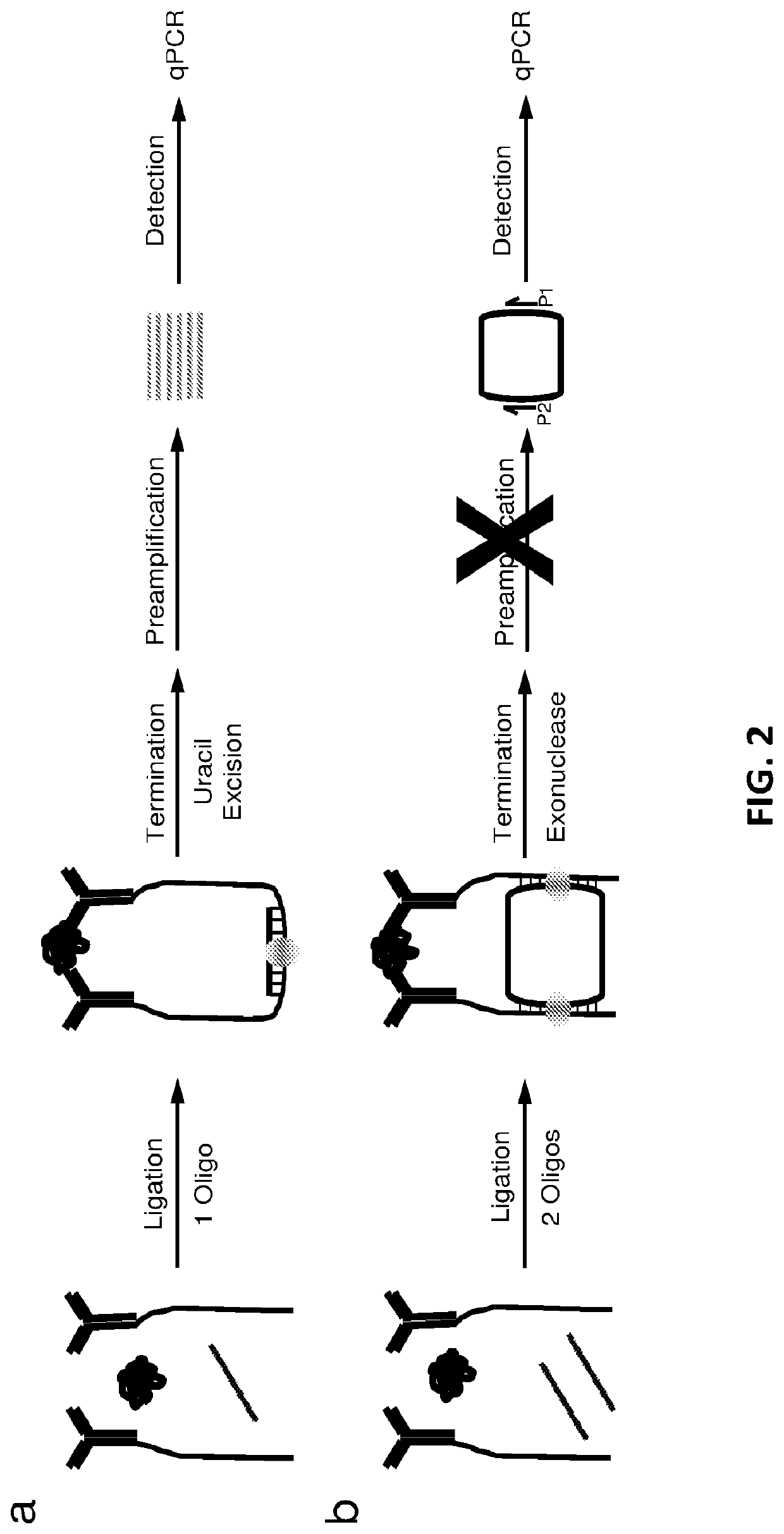Highly specific circular proximity ligation assay
a proximity ligation and high-specific technology, applied in the field of high-specific circular proximity ligation assay, to achieve the effect of reducing the probability of random background ligation events, enhancing specificity, and streamlined workflow
- Summary
- Abstract
- Description
- Claims
- Application Information
AI Technical Summary
Benefits of technology
Problems solved by technology
Method used
Image
Examples
embodiments
[0088]Embodiment 1. A method for sample analysis comprising:
[0089](a) incubating a sample comprising a target analyte with:[0090](i) a first conjugate comprising a binding agent and a first splint oligonucleotide, and[0091](ii) a second conjugate comprising a binding agent and a second splint oligonucleotide,[0092]under conditions suitable for binding of the binding agents of the first and second conjugates to the target analyte, to produce a product;
[0093](b) incubating at least some of the product of step (a) with:[0094](i) a set of probes that produces a ligatable circle only when the probes are hybridized to the first and second splint oligonucleotides; and[0095](ii) a ligase;[0096]to produce a reaction mix comprising covalently closed circular molecules;
[0097](c) treating at least some of the reaction mix of step (b) with an exonuclease to terminate the ligation and degrade any nucleic acid that is not a covalently closed circular molecule; and
[0098](d) after step (c), quantify...
examples
[0125]Aspects of the present teachings can be further understood in light of the following examples, which should not be construed as limiting the scope of the present teachings in any way.
[0126]Presented herein is a highly specific protein detection method, referred to as the circular proximity ligation assay (c-PLA), that outperforms traditional PLA in stringency, ease of use, reproducibility and compatibility with low affinity reagents. In c-PLA, two proximity-probes bind to an analyte providing a scaffolding that positions two free oligonucleotides such that they can be ligated into a circular DNA molecule. This assay format stabilizes antigen proximity-probe complexes and enhances stringency by reducing the probability of random background ligation events. Circle formation also increases selectivity since the uncircularized DNA can be removed enzymatically. This method has been compared to traditional PLA on several biomarkers and demonstrate that the higher stringency for c-PL...
PUM
| Property | Measurement | Unit |
|---|---|---|
| volume | aaaaa | aaaaa |
| volume | aaaaa | aaaaa |
| volume | aaaaa | aaaaa |
Abstract
Description
Claims
Application Information
 Login to View More
Login to View More - R&D
- Intellectual Property
- Life Sciences
- Materials
- Tech Scout
- Unparalleled Data Quality
- Higher Quality Content
- 60% Fewer Hallucinations
Browse by: Latest US Patents, China's latest patents, Technical Efficacy Thesaurus, Application Domain, Technology Topic, Popular Technical Reports.
© 2025 PatSnap. All rights reserved.Legal|Privacy policy|Modern Slavery Act Transparency Statement|Sitemap|About US| Contact US: help@patsnap.com



